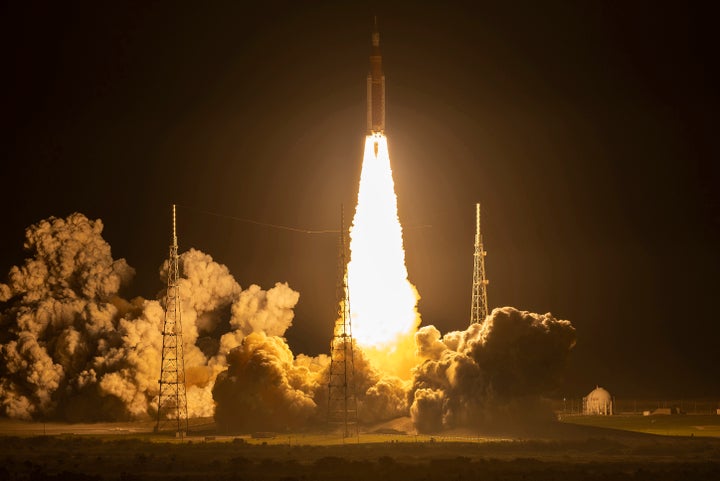
The US space agency sent the 100-metre tall spacecraft, also known as Artemis 1 Space Launch System (SLS), into space from Cape Canaveral in Florida on Wednesday.
The goal is for the spacecraft to propel the Orion capsule, held in its centre, to orbit the Moon.
The excitement and magnitude of the event was clearly captured in a video shared by journalist Derek Wise on Twitter.
In the one minute and 21 second clip, the dark sky lights up as the rocket shots upwards amid screams of delight from the press site, which is some distance away from the actual site of takeoff.
There’s also a decibel metre noting that it reached 109.1 decibels as it powered out of the Earth’s atmosphere in a blaze of light.
Decibels measure sound. As the Royal National Institute for Deaf People (RNID) puts into context by noting the sound of an aeroplane taking off 100m away is 130 decibels.
Around 140 decibels is the level at which noise “causes pain for most people”, according to the charity – so you can understand why reporters were standing so far away from the rocket during Wednesday’s launch.
There are no crew members on board SLS, but if it goes to plan, people will be able to go on the spacecraft in the future and travel to the lunar satellite and eventually land on it.
Orion still has to orbit around the Moon before the mission is considered a success, and before humans can be allowed on.
The trip will take 26 days, where the capsule will be up to 100km from the satellite’s surface. When at its furthest, it will be 70,000km away from the Moon– the furthest any human-rated spacecraft has travelled.
When it returns to Earth, it will travel 32 times the speed of sound.
There were two previous launch attempts in August and September earlier this year, but they were called off during the final countdown to lift-off due to technical difficulties.
This time, however, luck was on Nasa’s side and the rocket left the Kennedy Space Centre at 1.47am local time (6.47am GMT).
As Nasa’s administrator Bill Nelson said after the launch: “That’s the biggest flame I’ve ever seen. It’s the most acoustic shockwave that I have ever experienced. I have to say what we saw tonight was an A+. But we still have a long ways to go. This is just a test flight.”
Correction: A previous version of this story stated incorrectly that the rocket reached 1091 decibels. According to the reading, it reached 109.1 decibels.
